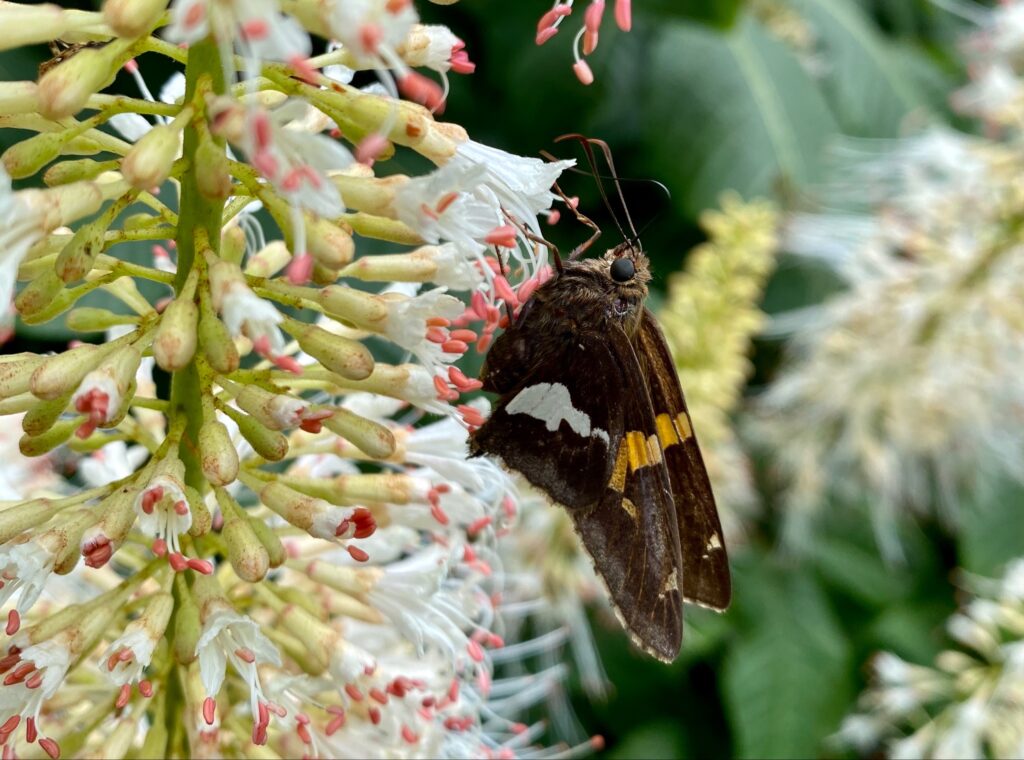Pollinators, like bees, are vital to the production of healthy crops for food, fibers, oils, medicines, and other products. That’s why we prioritize pollinator-friendly plants!
Here are a few of the pollinator species that you can look for when you are out enjoying the parks!

Carpenter Bees (Xylocopa Genus)
Our Team for Healthy Parks crew member, Lauren, snapped this Carpenter Bee resting on Bottlebrush Buckeye.
Bees in the Xylocopa genus (carpenter bees) are often thought of as pests, due to their choice of nesting materials. But, they are also very important pollinators! Their short mouths allow them to pollinate open-faced and shallow flowers such as the Passionflower.
Carpenter bees are thought to be the most successful pollinator of this native vine and pollinate crops such as eggplants and many other vegetables.
This bee is on a Bottlebrush Buckeye, a useful understory shrub that can be found in Seneca Park .
Sweat Bees / Furrow Bees (Genus Halictus)
Bees come in all shapes and sizes – the bee you see in the second photo is in the genus Halictus, or “sweat bees”. But, did you know they are also vital pollinators?
Unlike other bees, they are a more generalist species and can pollinate a variety of plants from sunflowers to stone fruits (like peaches). This bee is on a Black-Eyed Susan in one of our pocket meadows at Cherokee Park.
But it’s not just bees! Beetles, flies, hoverflies, butterflies, moths, hummingbirds, bats, some rodents are all native pollinators.

Where to Find Pollinators in the Olmsted Parks
Take a break this afternoon and see them in action at our meadows and Monarch Waystations in Algonquin Park, Cherokee Park, Seneca Park, and Iroquois Park.
Our Team for Healthy Parks crew member Wilson captured these lovely pollinators in their element:
The Team for Healthy Parks works constantly to mitigate invasive plants and improve habitats to support vital pollinators.
Find something similar: Algonquin Park Cherokee Park Chickasaw Park Iroquois Park Seneca Park









